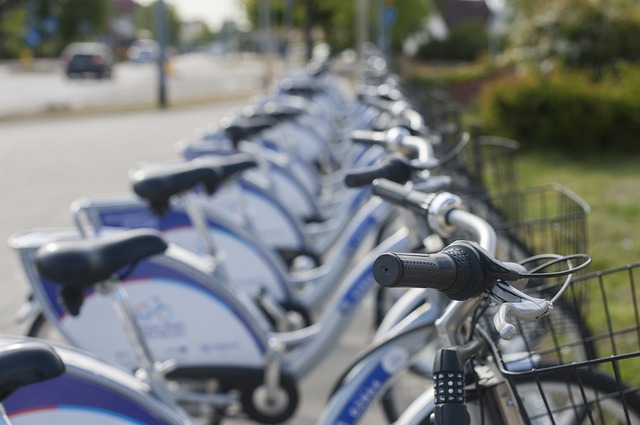15 minute city
Contents |
[edit] Introduction
The 15 minute city is a concept for a community in which essential amenities and services are all located within a 15 minute walking or cycling radius. It is an anti-car, anti-fossil fuel approach to urban planning that includes accompanying measures to provide safe walking and cycling routes while supporting local businesses and communities.
[edit] History
Sometimes referred to as a ‘new chrono-urbanism’, the 15 minute city concept was introduced in June 2019 by Carlos Moreno of Pantheon Sorbonne University in Paris. Its focus is on time rather than space, emphasising the importance of ‘hyperproximity’ and how ease of access can contribute to quality of life.
The concept is in direct contrast to the urban planning paradigms that have dominated the last century, in which residential areas have tended to be separated from business, retail, industry and entertainment.
In 2020, the idea of the 15 minute city gained momentum. As more urban dwellers started to walk and cycle during the COVID-19 pandemic, cities looked towards economic recovery options that would support the healthy and sustainable ways of life that had been adopted in their communities.
In 2023 British Conservative Party MP Nick Fletcher called 15-minute cities an "international socialist concept" during a debate in the UK Parliament in February 2023.
[edit] Aspects of 15 minute cities
Improved access can also help make human-centric neighbourhoods more desirable. At the centre of Moreno’s concept are six essential components:
In order to support those components, communities must be able to offer services (such as healthcare), support data (through reliable technology networks) and mobility (through public transportation options) within a 15 minute radius. According to Moreno, this will result in a sustainable planet, a social environment and will allow the possibility of improved wellbeing throughout the community.
[edit] From concept to outcome
Moreno’s concepts have been picked up by Dan Luscher, who has introduced The 15-Minute City Project. He considers the significance of proximity, diversity, density and ubiquity in his approach to achieving the goals set out by Moreno.
He writes, “The 15-minute city concept works initially as a North Star," and acknowledges that “making concrete progress towards this North Star will measurably improve the lives of many people, not only people who currently live in cities but the hundreds of millions of people globally who will migrate to cities in the coming decades.”
According to Luscher, there are several critical elements, including:
- Broad public engagement and buy-in.
- Detailed measurement and analysis
- Engaging all types of actors.
- Cost-effectiveness.
[edit] Related articles on Designing Buildings
- Collaboration needed to deliver national and regional transport strategies.
- Compact living.
- Garden cities.
- London Cycle Network.
- England metro mayors work to deliver ambitious climate action.
- Neighbourhood planning.
- Post pandemic places report.
- The compact sustainable city.
- Three key ingredients for designing inclusive walking and cycling infrastructure.
- Town planning.
- Urban design.
[edit] External resources
Featured articles and news
RTPI leader to become new CIOB Chief Executive Officer
Dr Victoria Hills MRTPI, FICE to take over after Caroline Gumble’s departure.
Social and affordable housing, a long term plan for delivery
The “Delivering a Decade of Renewal for Social and Affordable Housing” strategy sets out future path.
A change to adoptive architecture
Effects of global weather warming on architectural detailing, material choice and human interaction.
The proposed publicly owned and backed subsidiary of Homes England, to facilitate new homes.
How big is the problem and what can we do to mitigate the effects?
Overheating guidance and tools for building designers
A number of cool guides to help with the heat.
The UK's Modern Industrial Strategy: A 10 year plan
Previous consultation criticism, current key elements and general support with some persisting reservations.
Building Safety Regulator reforms
New roles, new staff and a new fast track service pave the way for a single construction regulator.
Architectural Technologist CPDs and Communications
CIAT CPD… and how you can do it!
Cooling centres and cool spaces
Managing extreme heat in cities by directing the public to places for heat stress relief and water sources.
Winter gardens: A brief history and warm variations
Extending the season with glass in different forms and terms.
Restoring Great Yarmouth's Winter Gardens
Transforming one of the least sustainable constructions imaginable.
Construction Skills Mission Board launch sector drive
Newly formed government and industry collaboration set strategy for recruiting an additional 100,000 construction workers a year.
New Architects Code comes into effect in September 2025
ARB Architects Code of Conduct and Practice available with ongoing consultation regarding guidance.
Welsh Skills Body (Medr) launches ambitious plan
The new skills body brings together funding and regulation of tertiary education and research for the devolved nation.
Paul Gandy FCIOB announced as next CIOB President
Former Tilbury Douglas CEO takes helm.
UK Infrastructure: A 10 Year Strategy. In brief with reactions
With the National Infrastructure and Service Transformation Authority (NISTA).
























Comments
[edit] To make a comment about this article, click 'Add a comment' above. Separate your comments from any existing comments by inserting a horizontal line.